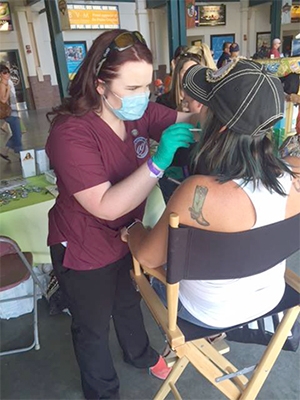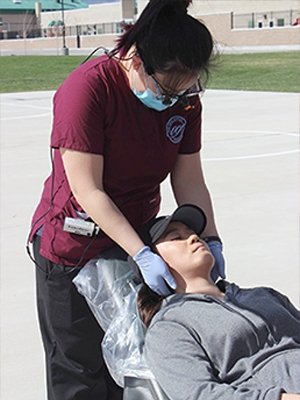


Like other cancers that we screen for, oral and oropharyngeal cancers should be screened for annually starting around the age of 18. If an individual uses tobacco products, screening for them should begin at the age they commence tobacco use. The visual and tactile screenings the foundation recommends are quick, painless, usually free or inexpensive, and non-invasive to undergo. The fact that they occur in an area of the body that lends itself relatively easy to examination, is an asset that allows a non-invasive manner to be used to detect their development early in many cases.
Front of the mouth oral cancers, usually related to tobacco use, heavy alcohol consumption or a genetic predisposition in a small number of cases, often produce visible pre-cancerous tissue changes that can be seen with the naked eye. In the very rear of the mouth known as the oropharynx, cancer can occur related to tobacco, use but now more frequently it is caused by the HPV16 virus, one that is commonly associated with cervical and other cancers. Therefore, do not think that because you are a non-smoker that you should skip these important screenings. Oropharyngeal cancers occur frequently in the tonsils and at the base of the tongue where it begins to curve down into the throat. Both these areas are hard to visualize, and early cancers in these areas do not often produce surface changes that a screener can see. Because of this, a good screening will incorporate verbal questions about symptomology that an individual might experience, but be unaware that it is an early warning sign for the development of a cancer in this region.
There are a number of ideas and technologies that screeners may add to the visual and tactile screening. The most common is a blue light which helps them distinguish some tissue changes that may not be different enough from the surrounding tissue for a screener to notice. NOT ALL OF THE TISSUE CHANGES THESE LIGHTS WILL FIND ARE CANCER, and the vast majority of discoveries with a tissue autofluorescence blue light are benign. While these lights are not specific to finding cancer, they can be a useful additional tool for the examiner. Note that there is no peer reviewed published data in scientific journals which shows that these lights are useful in the discovery of HPV origin oropharyngeal cancers, since theses cancers start deep within the tissues beyond a level that these light can reach. Also in very early stages these primary tumors can be very small often less than 5mm in size. That compounds the difficulty in early discovery. There are tests recently appearing on the market that use saliva, or cells rinsed from the mouth and sent to a laboratory, to look for genomic, proteomic, or molecular markers that might be characteristic of cancer. At this time the foundation’s science board does not feel them useful for the added expense of the test, as validation of these different markers in the various tests has not rigorously been established in any large population. We hope that in the future these tests, which have NOT yet gained FDA approval, will prove to be a more useful adjunct to the visual and tactile screening.
OCF’s current screening events are put up on our web site’s calendar which can be accessed through the link below and other links on our web site. The largest number of them occur during the month of April when approximately 2500 dental and medical professionals around the country partner with the foundation and open their offices to the public to do free screenings, as it is national Oral Cancer Awareness Month. When we do screenings at our own walk and run events around the country, they are listed at the same link below, just check the box to search for walk events in addition to the box for screening. If you do not choose to sign up for and join our walk, you are still welcome to join us and just access the screening part of the event at no charge.
Self Screening might save your life. Besides getting screened at your doctors office, OCF encourages you to self screen monthly at home. These regular self-examinations will potentially catch something earlier than waiting for your annual exam. Think this might be too hard to learn and do? Not at all. The foundation has created a standalone website at checkyourmouth.org which contains a short educational video on how to do this. When combined with our inexpensive lit tongue blade to illuminate your mouth, you can see the potential suspect areas easily and self refer to your dental professional for evaluation of what it is. Early discovery means higher survival rates and lower treatment related morbidity if it is actually something dangerous.




